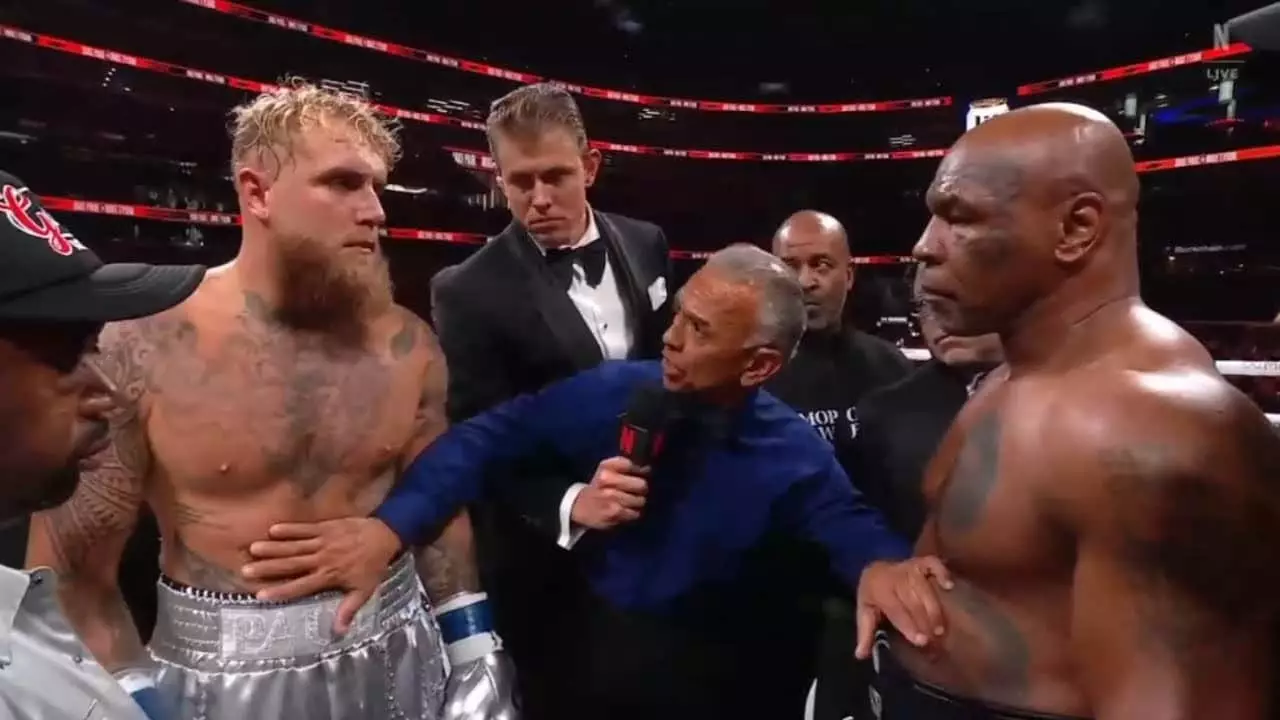In a spectacle that pitted the younger social media sensation Jake Paul against the legendary yet aging heavyweight champion Mike Tyson, the fight ended up being more than just a boxing match; it highlighted generational differences, expectations, and the entertainment-first approach that modern boxing has adopted. Jake Paul, at 27 years old and with a professional record of 11-1, showcased a surprising level of skill against the 58-year-old Tyson, whose remarkable history in the ring is overshadowed by concerns about his age and ability to compete effectively against more youthful fighters.
The bout, which took place in Arlington, Texas, was marred by questions regarding the integrity of the match. Paul’s declaration that he consciously avoided knocking Tyson out because he didn’t want to “hurt” him raised eyebrows. While his intentions may have stemmed from a sense of sportsmanship, critics were quick to suggest that this restraint ultimately detracted from the authenticity of the contest. Many in the audience felt betrayed, perceiving the match as a poorly scripted performance rather than the hard-hitting fight they had hoped for.
Analyzing the numbers provides further insight into the dynamics of the fight. Mike Tyson managed to land a mere 18 punches out of 97 attempts, resulting in a staggering connection rate of just 18.6%. Conversely, Paul thrived, landing 78 of his 278 thrown punches—a rate of over 28%. This stark imbalance not only indicates a skill gap but also calls into question the effectiveness of Tyson’s strategy in the ring. The historical heavyweight champion appeared unable to effectively engage with an opponent who, while less experienced, had incorporated training and techniques suitable for modern boxing. The statistics further reinforced the idea that this fight was perhaps less competitive than fans had hoped.
For an event that invited audiences from near and far, the disappointment became palpable as social media exploded with criticism. Fans who had paid hefty subscription fees to watch the fight on Netflix or had traveled to witness it live were clearly unhappy with the lack of excitement. With inflated expectations surrounding Tyson’s return to the ring, many were disillusioned by the apparent lack of urgency or intent to engage in a fierce bout. Instead, they were met with a cautious performance, creating an aura of scripted outcome rather than genuine sport.
Even Jake Paul himself acknowledged the criticism, expressing that he aimed to entertain even while holding back against Tyson’s fatigue. However, grappling with the tension between sportsmanship and demand for authentic competition seems a complex challenge for the modern athlete. The weight of viewing expectations hangs heavy, and ultimately, this bout between a once-revered champion and a viral star makes one wonder about the future of boxing: Is it now merely a performance art rather than a contest of physical prowess?
Jake Paul’s bout with Mike Tyson is emblematic of a larger trend in boxing, where entertainment value often outweighs competitive integrity. While both fighters brought their narratives to the ring, it’s essential to question if this model—focused on spectacle and celebrity—positions the sport on a precarious path. Ultimately, fans may seek a return to the visceral excitement that defined the sport, where fighters prioritize contest above theatrics, leaving behind the scripted feeling that many perceived from this intriguing yet disappointing match.


Leave a Reply